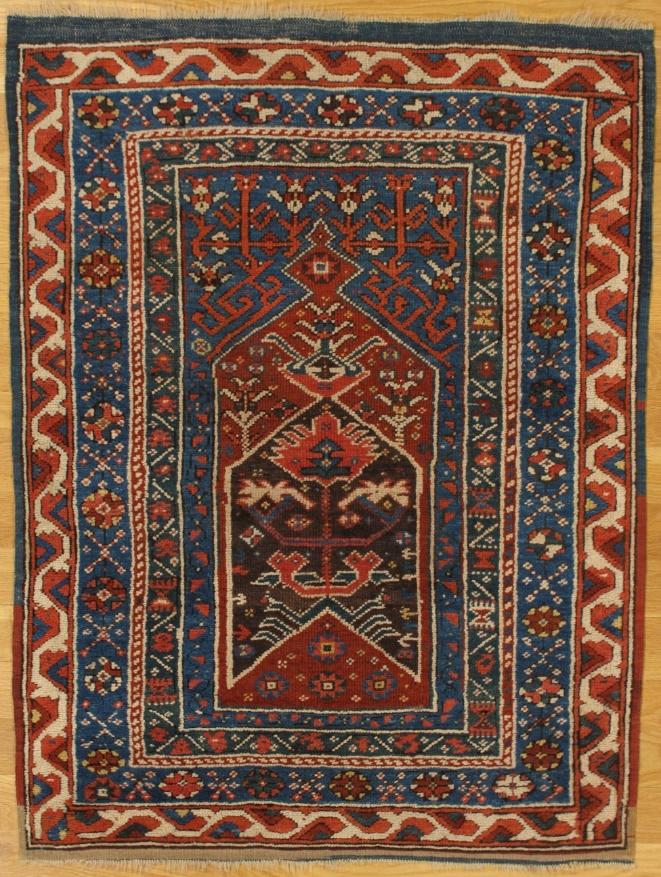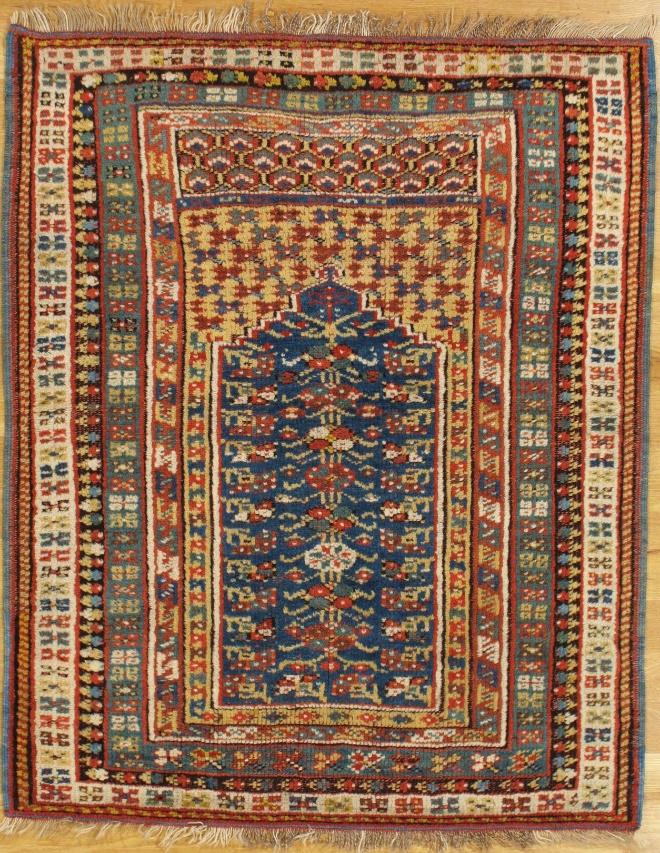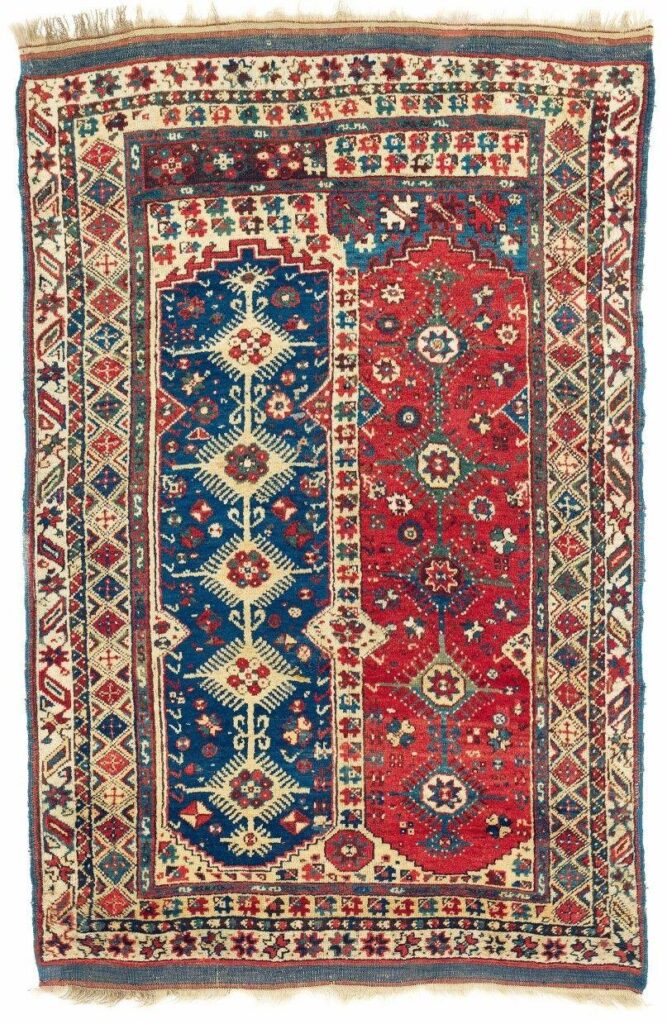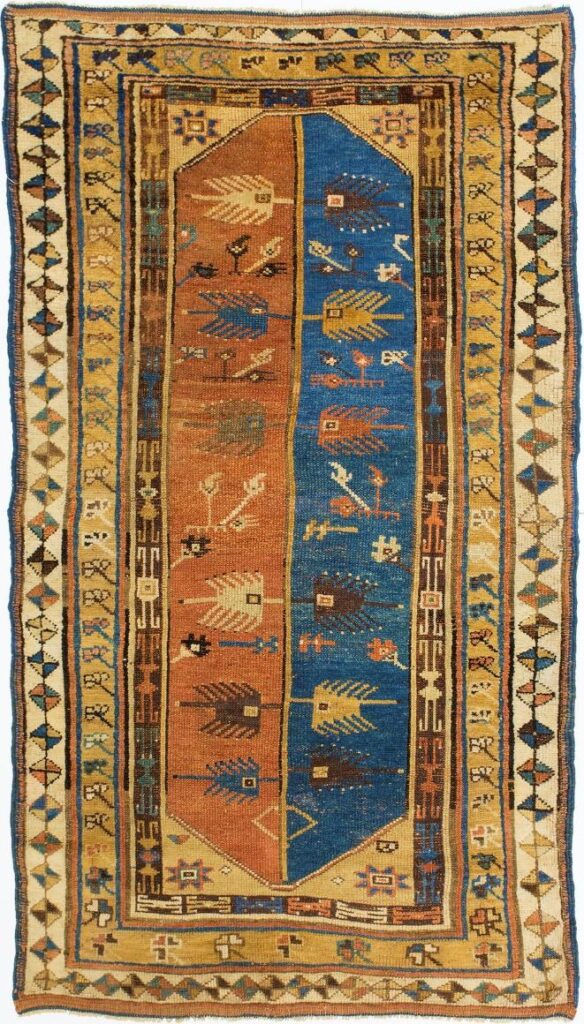Fethiye (Makri) Rugs
Fethiye (formerly known as Makri, Mekri or Megri) is a seaport town in the Aegean Region of Turkey. Modern Fethiye is located on the site of the ancient city of Telmessos, the ruins of which can be seen in the city. The region became part of the Ottoman Empire in 1424, and was called Megri until 1934.
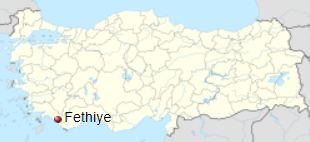
In 1934, the town was renamed Fethiye in honor of Captain Fethi Bey, one of the first pilots of the Ottoman Air Force.
The area has unique type of rugs, antique pieces of which branded as Makri and Megri Pieces woven during the 20th century are have been chiefly branded Fethiye.
Technical aspects and the structure of Fethiye (Makri) Rugs

Fethiye rugs are rather small. Prayer sizes are the most common. Pieces called Brothers prayer rugs are double in width.
Antique Makri or Megri pieces have been woven during the 18th and 19th century. Pile and foundation of these pieces are completely woolen. Knots are symmetric (Turkish). Wool of the area is rather coarse.
Dyeing and painting of Fethiye (Makri) rugs
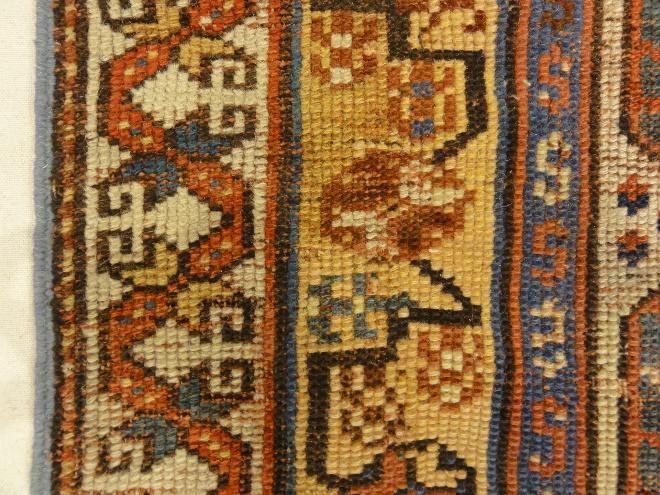
Dark and semi-light cobalt blues combined with rich red and yellow shape the dominant palette of Makri antique pieces. Simple geometric shapes are brought to life with such rich, vibrant colors.
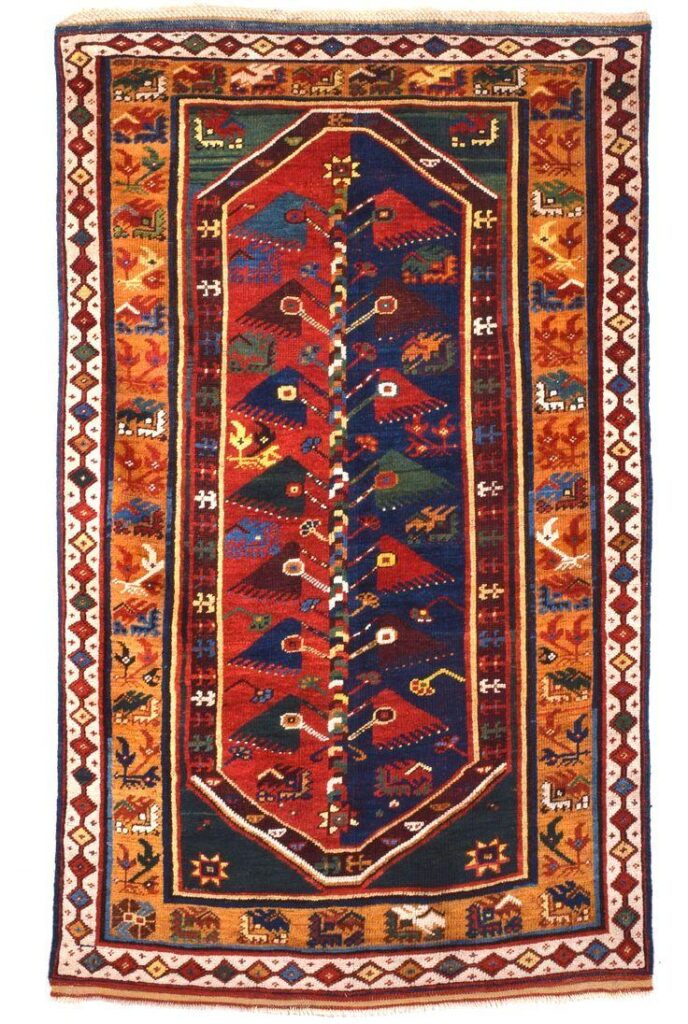
Fields of vertical panels are usually painted with opposing colors. White, beige or light camel tiny blossoms shine in red and blues of these fields.
Wefts of Fethiye rugs are usually red and the selvage is often blue.
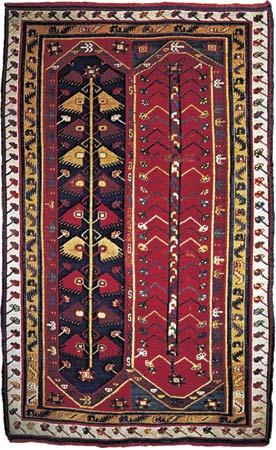
Designs and patterns of the Fethiye (Makri) rugs
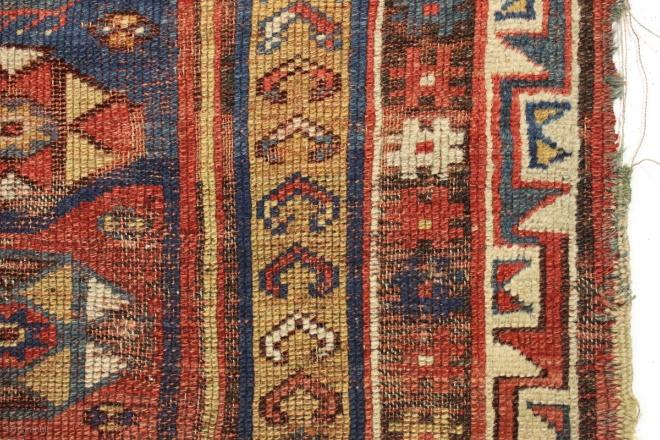
Makri designs is so unique you can’t fail to recognize. These are made with bold vertical shapes and bold opposing colors. Vertical panels may be rendered in double and triple compositions. Inside these vertical panels, may be filled with pole diamonds, geometric floral motifs or single trees.
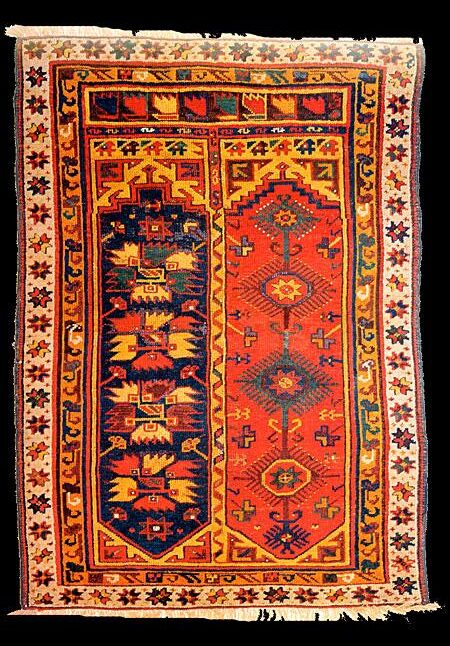
If these sort of pattern and coloring applied to a piece with a single wider vertical panel that would be a classic prayer version of Makri design. Nevertheless the double paneled designs of Makri are also considered a type of prayer rug for two praying persons. Some name such designs Brothers prayer rugs.
Another type of design attributed to the region and branded as Makri are a group of the late 19th century pieces designed with Mejidian style. This is a style attributed to the Ottoman emperor Sultan Abdul Majid, consisted of French floral design, namely large naturalistic roses.
